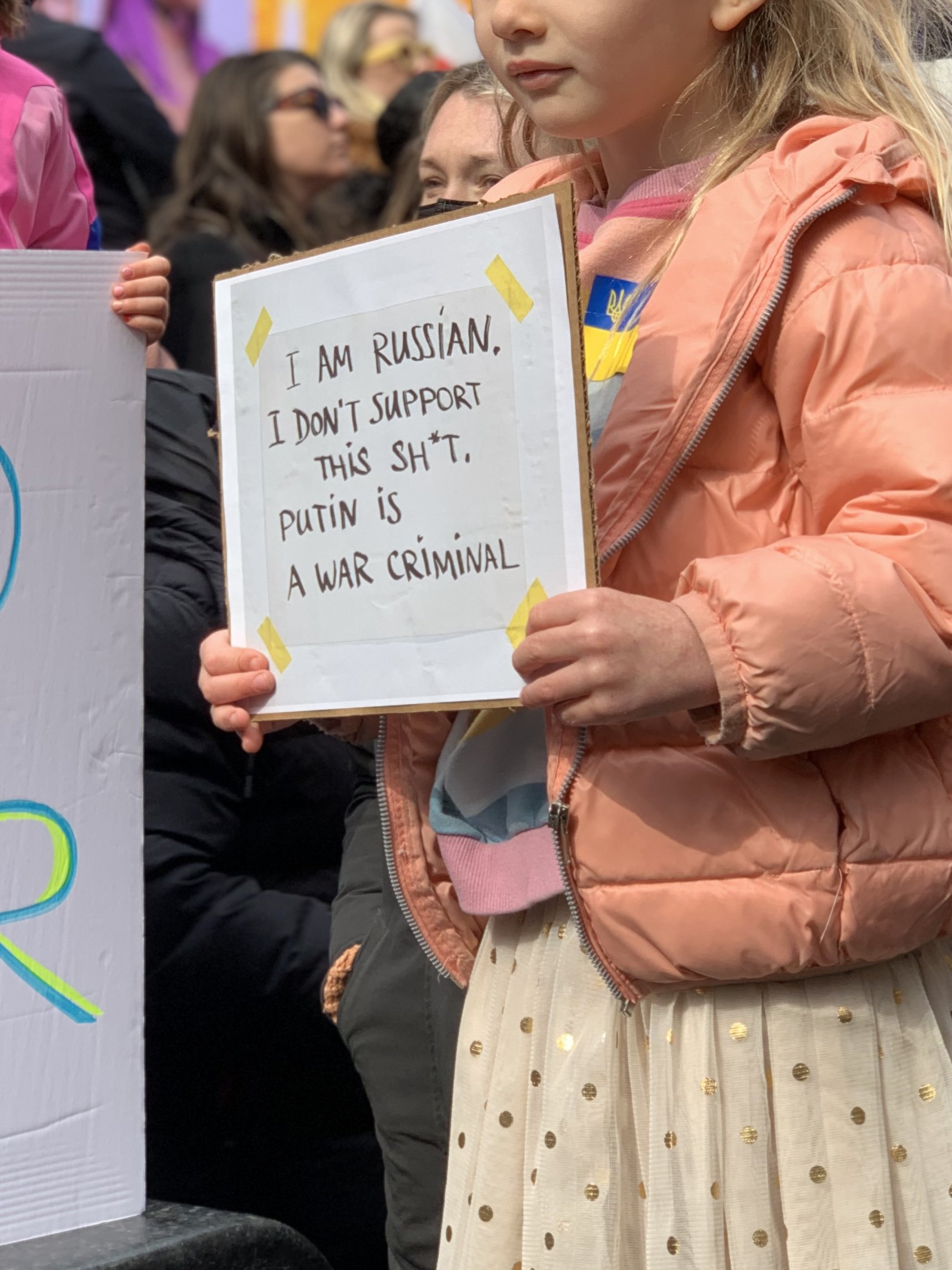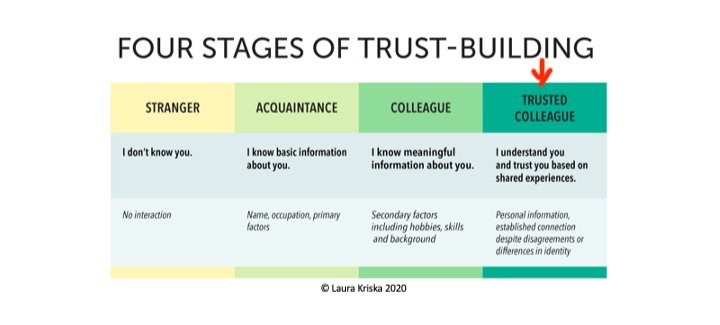The secret ingredient to building unity in an ‘us’ versus ‘them’ world
Many of us are struggling as we watch the unjust invasion of Ukraine. We wish for peace and feel helpless as we read the news each day. My solution to US versus THEM gaps is to inspire people to look for divides in their own lives and take action to narrow those gaps.
Last week, after I posted about taking action, something unexpected happened. I got a message from a person I’ve worked with in the past who has family in Ukraine. She asked me if I had attended a rally to support Ukraine in NYC where I live. Her question prompted me to investigate and then attend a rally a few days later in Times Square where thousands of people wearing blue and yellow showed up. I saw signs with flags from France, Peru, Israel, and Russia – all showing solidarity with Ukrainian people.
When I got home from the rally, I sent photos to the woman who had nudged me and I was surprised when she asked if she could share with her family back home, saying, ‘They are staying strong despite everything, seeing that the world is with them helps a lot.’ (I share this with her permission.)
It felt great to know that these images might offer direct comfort to people who are suffering, even if just for a moment. But it does not feel great to admit that without her nudge, I probably would not have attended the rally. It was our personal relationship that prompted me to take action.
“Relationships will be our salvation away from division & toward unity.”
In an idealized world relationships between people from different backgrounds grow organically, but the truth is that many of us live homogeneous lives and don’t have many opportunities for ‘organic’ relationships across difference to grow. Research shows that most of us hang out with others who look, sound and pray like we do.
Living a homogeneous life while working and living in an increasingly diverse and interconnected world leads to problems because decisions and behavior are based on assumptions rather than facts. If all the people in your immediate circle look, sound and pray like you do, then chances are high that you will default to superficial information rather than accurate data about the lived experience of people around you.
Imagining the world we want to live in is nice, but only actions will help us reach a more peaceful and unified community where people from different backgrounds work together toward common goals. To achieve this goal, we all must work to develop relationships outside our familiar circles.
The simple method for developing trusting relationships is this:
Engage in face-to-face encounters of increasing depth.
I use four categories to describe the trust-building continuum: Stranger, Acquaintance, Colleague and Trusted Colleague.
The problem I have experienced, and witnessed in thousands of others, is that when there is some type of difference (real or perceived) many people stop taking action to further their relationships when they reach the Acquaintance or Colleague category. I hear many explanations for why people stop.
These reasons include:
I don’t know what to say or do.
I don’t want to say or do the wrong thing.
I’m busy.
Covid restrictions made it hard.
My ask today is a simple one. Think about one target group that is not represented in your circle of Trusted Colleagues. Maybe it is someone who identifies with a specific religious, ethnic, racial or national identity that you do not identify with but you view as relevant to your life. I ask you to think about where you might encounter people who identify with this cultural group. Might it be a community function, an educational event or even a rally to support Ukraine? Be as specific as possible and…
*Join my mission to inspire a WE-Building revolution where people take action to bridge US versus THEM gaps in the workplace and beyond.



